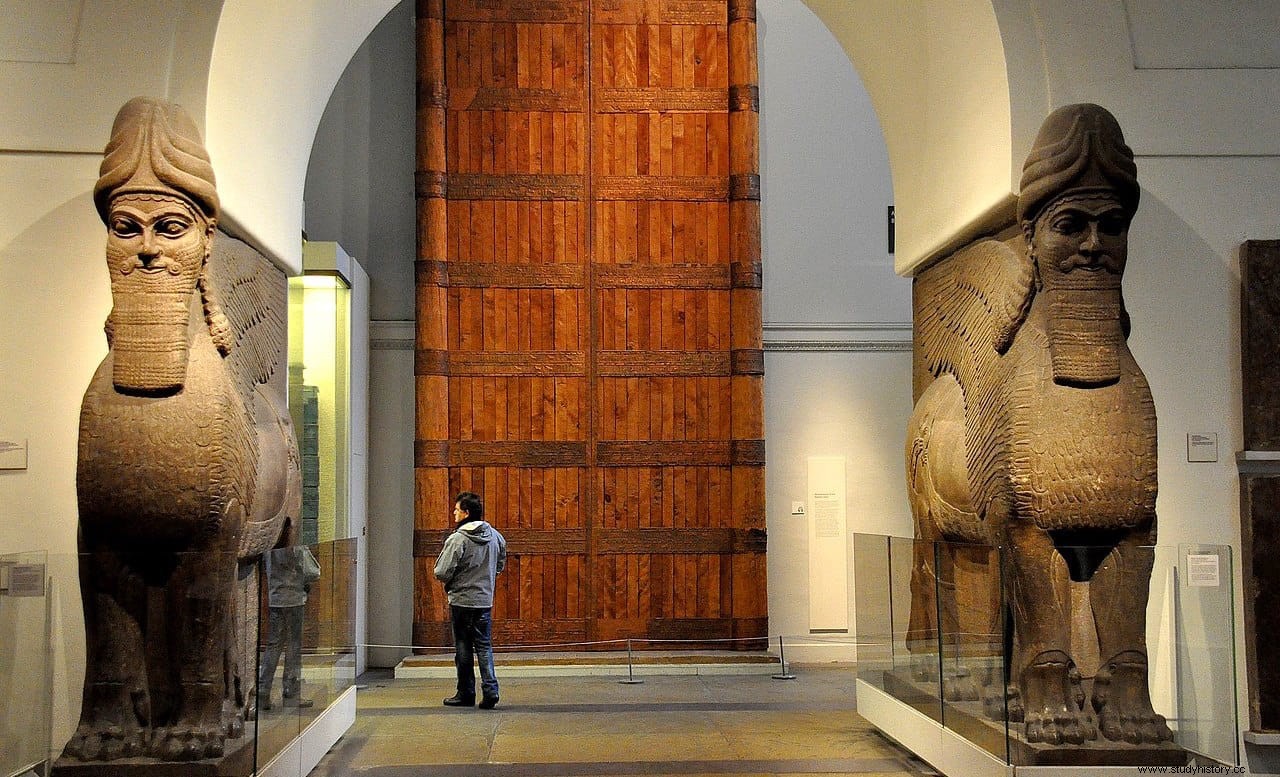In 1878 the Iraqi archaeologist Hormuzd Rassam discovered, about 25 kilometers southeast of Mosul, the remains of a city next to the village of Balawat. It turned out to be the ancient Imgur-Enlil (whose literal meaning is Enlil favored us ) Neo-Assyrian founded by Ashurnasirpal II during his reign, between 858 and 824 BC
The construction of the city was continued by his son and it prospered for almost two centuries until the fall of the Neo-Assyrian empire between 614 and 609 BC, when it was destroyed by the Medes, Scythians and Babylonians. Hormuzd excavated it until 1882 and then it would be forgotten until Max Mallowan resumed work for the British School of Archeology in Iraq in 1956.
The excavations brought to light a large walled city of about 64 hectares, with a square floor plan and about 800 meters on each side, which housed numerous palaces and temples. And also some large bronze bands with reliefs that had been placed on huge wooden doors.

Alongside them were found two inscribed marble tablets by Ashurnasirpal II, describing the founding of a bronze-doored temple dedicated to Mamu, the Assyrian goddess of dreams:I did it because I wanted to build a temple for the goddess Mamu, which must be in the vicinity of my royal palace .
Although the doors were no longer there, due to the decomposition of the wood, the archaeologists estimated that they must have been about 6 meters high and 2 meters wide (each leaf). The brass bands had been nailed to them. According to archaeologist D.J. Tucker, who conducted research at the site in the late 1980s, the discovery of the gates is unparalleled in scale, even to this day .

The chiseled bas-reliefs on the bronze bands depict scenes of sacrifices, tributes, and military campaigns of Shalmaneser III, and include the earliest representations of natural and landscape elements, such as trees and mountains, in Assyrian art.
Two other sets of bronze bands were also found, from doors from Shalmaneser's palace and from a third palace or temple. Contemporary inscriptions suggest that the doors were made of cedar wood, and were hingeless, opening by turning huge bronze-decorated pine pillars on stone plinths.
The bronze bands from the doors of the Mamu temple (discovered by Mallowan in 1956) are preserved in the Mosul museum, while most of the rest (found by Rassam in 1878) are in the British Museum, where they can be seen along with a hypothetical reproduction of the original doors of the Shalmaneser palace. There are also fragments of the reliefs in the Istanbul Archaeological Museum.

Each door of Shalmaneser's palace had eight bronze bands on its outer face. The great variety of its images has given researchers a better understanding of the life and technology of the Neo-Assyrian empire, thanks in part to the fact that descriptive inscriptions are also included.
They tell how in the year 852 B.C. King Shalmaneser III discovered the source of the Tigris River. Workmen are also depicted carving stone to create representations of the king.
According to Tucker, the bands are extraordinary in their depiction of detail in action-packed campaigns from as far afield as Babylon, Tire and the Anatolian highlands.

The gates illustrate thirty-four fortified cities of which eighteen are subject to assault, twelve are subject to tribute, and the remaining four are under Assyrian control.
The different horizontal registers sculpted on the palace plaques each represent a different campaign, accompanied by a legend, following a similar scheme that begins with the departure of the troops from the camp followed by the battle, the capture of the enemy city, the deportation of the vanquished and, finally, the victory celebration through offerings to the gods and victory stelae.
Both the style and subject matter of these scenes are reminiscent of the bas-reliefs in the earlier royal palace at Kalkhu (Nimrud), or the carvings on the black obelisk of Shalmaneser, which is contemporary with the gates.
